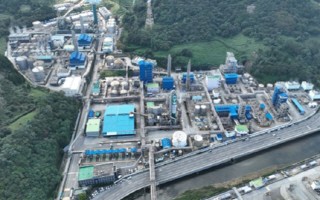TKG HUCHEMS Yeosu plant (Photo: TKG HUCHEMS)
SEOUL -- TKG HUCHEMS (hereinafter referred to as “the firm”) has secured the technology for manufacturing the raw material, Phenylenediamine (PDA), the essential ingredient for Aramid fiber. It is significant as the firm made further progress from its current major product Mono Nitro Benzene (MNB) which serves as the raw material in Poly Urethane, to the Aramid fiber business.
Aramid fiber is known as “Super fiber,” because it is lighter than steel yet 5 times stronger and could withstand over 500 degrees Celsius. Aramid fiber is used in bulletproof vest, EV tire cords and optical cables with utilizing its high tensile properties. It also specializes in heat resistance, employed in fireproof cloth and insulation paper to enhance safety. Aramid fiber is divided into para-aramid known for its hyper-strength and meta-aramid with excellent heat resistance, according to the raw material in its manufacturing process. TKG HUCHEMS has secured the core technology for manufacturing both types of Aramid raw materials.
With advancements in the material industry, the Aramid fiber market is expanding. Aramid industrial capacities in Korea were 17,000 tons in FY2023 and are expected to reach 33,000 tons by FY2025. Consequently, the domestic demand for Phenylenediamine (‘PDA’) is required around 8,000 tons per year up to 16,000 tons by FY2025. However, currently, the domestic Aramid fiber manufacturers optimize their raw material supply chain solely dependent on imports.
Launching an R&D campaign to develop Phenylenediamine (PDA) since FY2013, TKG HUCHEMS was granted an official technology status from the MOTIE (Ministry of Trade, Industry and Trade, Korean Government) in FY2019. It was also nominated as one of the 150 core technologies announced by the MOTIE in FY 2023. Currently, the firm holds 9 official patents, including technology for para-Phenylenediamine (PDA) manufacturing, and has accomplished the process design for manufacturing.
The Aramid industry in Korea is enjoying strong downstream market growth while having little progress in the upstream market. Therefore, once the Aramid fiber raw material is domestically available, it could offer assurance in optimizing the supply chain for the Korean Aramid fiber market. The firm representative said that the time to build a manufacturing plant considerably depends on the market environment.






